Here is a fascinating new approach to the design of a mast and sail. The developers at Next Technologies claim that their Inflated Wing Sail (IWS) is stable in every wind conditions and offers a smooth balanced new way of sailing. No more winches, halyards, shrouds or complex deck gear.
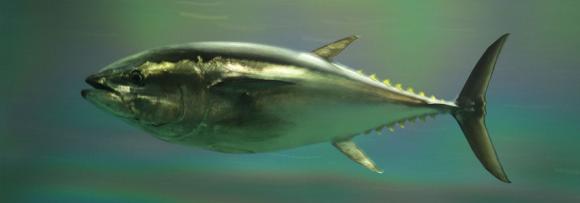 The Pacific bluefin tuna is at risk of becoming commercially extinct. Overfishing has depleted stocks of the fish by an estimated 97%. Now the principle tuna-fishing nations have reached an agreement to gradually rebuild the depleted stocks, while still allowing Japan, by far the largest consumer of the bluefin, to continue to catch and consume the highly prized fish. Japan eats 80 percent of the $42 billion global haul of bluefin and had resisted restrictions on the fishery.
The Pacific bluefin tuna is at risk of becoming commercially extinct. Overfishing has depleted stocks of the fish by an estimated 97%. Now the principle tuna-fishing nations have reached an agreement to gradually rebuild the depleted stocks, while still allowing Japan, by far the largest consumer of the bluefin, to continue to catch and consume the highly prized fish. Japan eats 80 percent of the $42 billion global haul of bluefin and had resisted restrictions on the fishery.
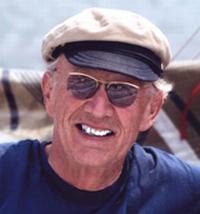 I recently learned that Meade Gougeon has died at aged 78 of melanoma. More than 45 years ago, I was a young student of naval architecture at the University of Michigan. I met Meade when he came to speak to the Quarterdeck student society about a relatively new wood-epoxy laminate boat building technology that he and his brothers had developed. They called it the Wood Epoxy Saturation Technique, or the WEST System.
I recently learned that Meade Gougeon has died at aged 78 of melanoma. More than 45 years ago, I was a young student of naval architecture at the University of Michigan. I met Meade when he came to speak to the Quarterdeck student society about a relatively new wood-epoxy laminate boat building technology that he and his brothers had developed. They called it the Wood Epoxy Saturation Technique, or the WEST System.
More than 45 years ago, I was a young student of naval architecture at the University of Michigan. I met Meade Gougeon when he came to speak to the Quarterdeck student society about a relatively new wood-epoxy laminate boat building technology that he and his brothers had developed. They called it the Wood Epoxy Saturation Technique, or the WEST System.
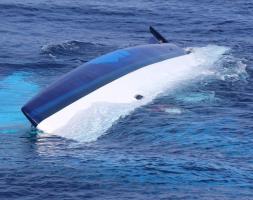 Lewis Bennett, 38, a British engineer, was recently arrested by the FBI on charges related to possession of stolen rare silver and gold coins. The story behind the arrest gets very strange, involving a Caribbean theft, a missing wife, and a sunken catamaran.
Lewis Bennett, 38, a British engineer, was recently arrested by the FBI on charges related to possession of stolen rare silver and gold coins. The story behind the arrest gets very strange, involving a Caribbean theft, a missing wife, and a sunken catamaran.
On May 14th, Bennett was sailing with his wife, Isabella Hellman from Cuba to Florida. They had married in February and were on a delayed honeymoon on their 37′ catamaran, Surf into Summer. They have a 9-month-old daughter who was not with them aboard the boat.
While in the Florida Straits, the boat sank, Hellman went missing and Bennett was rescued from a life raft by the US Coast Guard. He told his rescuers that he had been below asleep, with Hellman on watch on deck. He said that he was awoken when the catamaran hit something and began taking on water rapidly. When Bennet came on deck, he said that his wife was nowhere to be found. The Coast Guard searched for three days for Isabella Hellman without finding any trace of the missing woman.
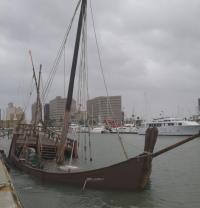 The last of Corpus Christi’s Columbus replica ships has sunk. In 1992, the quincentenary of Columbus’ first voyage, replicas of his ships; the Niña, Pinta and the Santa Maria; arrived in Corpus Christi, Texas after sailing from Spain and touring the US East Coast. The ships were donated to the city. The Santa Maria and the Pinta were broken up in 2014. The Niña remained afloat at a dock behind behind Joe’s Crab Shack. Or at least she was afloat until Hurricane Harvey came calling, when the Niña began taking on water and sank. Click here for more photos.
The last of Corpus Christi’s Columbus replica ships has sunk. In 1992, the quincentenary of Columbus’ first voyage, replicas of his ships; the Niña, Pinta and the Santa Maria; arrived in Corpus Christi, Texas after sailing from Spain and touring the US East Coast. The ships were donated to the city. The Santa Maria and the Pinta were broken up in 2014. The Niña remained afloat at a dock behind behind Joe’s Crab Shack. Or at least she was afloat until Hurricane Harvey came calling, when the Niña began taking on water and sank. Click here for more photos.
Corpus Christi’s Niña is not the only replica of the ship now sailing. The Michigan Maritime Museum in South Haven, MI will be hosting The Columbus Society‘s replica Niña and Pinta over the Labor Day Weekend. Click here to learn more. Thanks to Robert Kennedy for contributing to this post.
 The boats and the circumstances are all different and yet each in its way is the same, from the “little ships” of Dunkirk, to the Manhattan Boat-Lift of 9/11, to the jon-boat navy of the Texas Gulf coast. When people need help, mariners of every stripe come to the rescue.
The boats and the circumstances are all different and yet each in its way is the same, from the “little ships” of Dunkirk, to the Manhattan Boat-Lift of 9/11, to the jon-boat navy of the Texas Gulf coast. When people need help, mariners of every stripe come to the rescue.
The flooding caused on the Texas Gulf coast by Hurricane Harvey is unprecedented. A third of Harris County, Texas, which includes Houston, the fourth largest city in the US, with a population of 4 million, is now fully underwater. And the flood waters just keep rising. Rainfall totals in some areas are expected to exceed 4 feet.
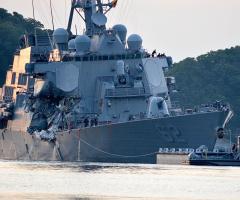 Two high tech guided missile destroyers charged with protecting the fleet from incoming missiles somehow failed to avoid collision with two slow-speed commercial vessels. Tragically, seventeen sailors died in the collisions. Some immediately blamed cyber-hacking, although a Navy investigation has turned up zero evidence to support the claim. Now, the focus is on more prosaic and avoidable causes — inadequate training, sleep deprivation, and poor ship management.
Two high tech guided missile destroyers charged with protecting the fleet from incoming missiles somehow failed to avoid collision with two slow-speed commercial vessels. Tragically, seventeen sailors died in the collisions. Some immediately blamed cyber-hacking, although a Navy investigation has turned up zero evidence to support the claim. Now, the focus is on more prosaic and avoidable causes — inadequate training, sleep deprivation, and poor ship management.
The Navy Times put it simply — “Maybe today’s Navy is just not very good at driving ships.” They write: “The problem is years in the making. Now, the current generation of officers rising into command-level billets lacks the skills, training, education, and experience needed to operate effectively and safely at sea, according to current and former officers interviewed by Navy Times.”
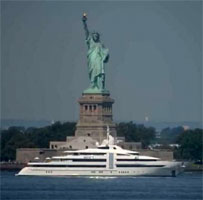 The arrogance is as impressive as the yachts themselves. Rather than paying for dockage, in recent years, billionaire Russian oligarchs have taken to anchoring their yachts in the public anchorage in front of the Statue of Liberty while in New York Harbor. This summer, Le Grand Bleu, a 370-foot long luxury yacht owned by Evgeny Markovich Shvidler, took up residence for weeks at a time between April and June in front of the statue, effectively blocking the view of the iconic landmark for tourists and residents alike. And it is not just the Russians.
The arrogance is as impressive as the yachts themselves. Rather than paying for dockage, in recent years, billionaire Russian oligarchs have taken to anchoring their yachts in the public anchorage in front of the Statue of Liberty while in New York Harbor. This summer, Le Grand Bleu, a 370-foot long luxury yacht owned by Evgeny Markovich Shvidler, took up residence for weeks at a time between April and June in front of the statue, effectively blocking the view of the iconic landmark for tourists and residents alike. And it is not just the Russians.
After Le Grand Bleu raised anchor and departed, Swiss-Italian Ernesto Bertarelli dropped the hook of his 318-foot Vava II. He was followed by German billionaire Reinhold Würth in 280-foot Vibrant Curiosity in early August.
Remarkably, Scotland’s Mylne Yacht Design was founded by Alfred Mylne I in 1896 and has been in continuous operation for more than 120 years. Alfred Mylne designed over 400 yachts in his career.
Here is a short video of classic yachts sailing on the Clyde in the 1930s, featuring designs by Alfred Mylne and Charles Nicholson, includingThendara, Iyruna, Audifax , Shamrock V, Tigris, Panope, Veronica, and the original Royal Yacht Britannia.
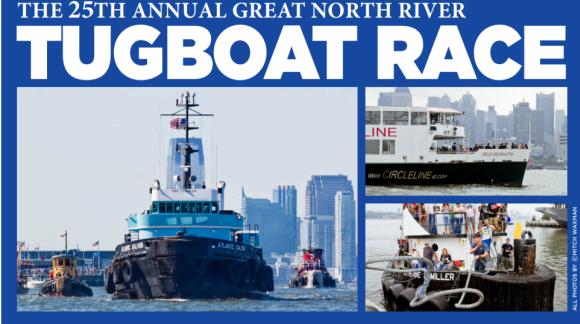 For those in and around New York harbor, the 25th Annual Great North River Tugboat Race & Competition, sponsored by the Working Harbor Committee, is coming up on Sunday, September 3rd. The Parade of Tugs starts on the Hudson River at 10 AM. Free viewing is available at Pier 84 located at W. 44th Street & Hudson River Park. The tugs will proceed to the starting line at 70th Street. The race begins at 10:30 AM. Nose-to-nose pushing contests and line-toss competitions will start around 11 AM. At Noon the amateur line-toss and spinach-eating contests will commence followed by an 1 PM awards ceremony.
For those in and around New York harbor, the 25th Annual Great North River Tugboat Race & Competition, sponsored by the Working Harbor Committee, is coming up on Sunday, September 3rd. The Parade of Tugs starts on the Hudson River at 10 AM. Free viewing is available at Pier 84 located at W. 44th Street & Hudson River Park. The tugs will proceed to the starting line at 70th Street. The race begins at 10:30 AM. Nose-to-nose pushing contests and line-toss competitions will start around 11 AM. At Noon the amateur line-toss and spinach-eating contests will commence followed by an 1 PM awards ceremony.
For an even better view of the parade of tugs and the tugboat race, there is also a Continue reading
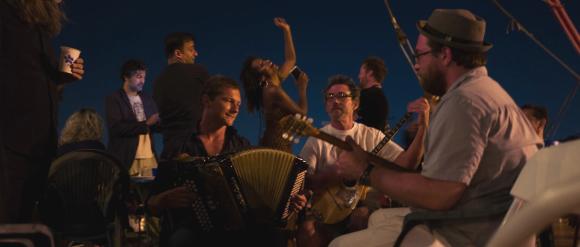 PortSide New York is a non-profit based in New York harbor on the historic tanker Mary A. Whalen. Their goal is to create a new kind of maritime destination in NYC, one that sets a new standard for how to bring urban waterways to life. Toward that goal, PortSide hosts TankerTime 2017, summertime get-togethers on the main deck of the Mary A. Whalen, with special events on the Second Sunday of each of the warmer months. Here is a fascinating and timely post by the president of PortSide, Carolina Salguero, about the latest Second Sunday.
PortSide New York is a non-profit based in New York harbor on the historic tanker Mary A. Whalen. Their goal is to create a new kind of maritime destination in NYC, one that sets a new standard for how to bring urban waterways to life. Toward that goal, PortSide hosts TankerTime 2017, summertime get-togethers on the main deck of the Mary A. Whalen, with special events on the Second Sunday of each of the warmer months. Here is a fascinating and timely post by the president of PortSide, Carolina Salguero, about the latest Second Sunday.
TankerTime: Do you have any Slovenians?
by Carolina Salguero, President, PortSide NewYork
In this era of Charlottesville, anti-immigrant politics and Muslim bans, I want to share how PortSide NewYork is celebrating different cultures and bringing different people together. One of our means is music and evening TankerTime on the MARY A. WHALEN. In doing so, we continue the multicultural traditions of Red Hook and port districts in general.
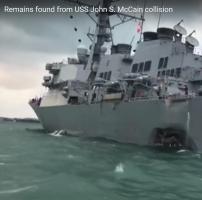 Following the recent collision of a tanker with the US Navy destroyer USS John S. McCain, in which 10 sailors are missing, the US Navy has dismissed Vice Admiral Joseph Aucoin as commander of the 7th Fleet. There have been four significant casualties involving ships of the 7th fleet in Asia this year. The casualties include the collision of the USS Fitzgerald with a container ship in June off the coast of Japan, killing seven sailors. Rear Admiral Phil Sawyer, who had already been named to succeed Admiral Aucoin earlier, has assumed command of the 7th Fleet.
Following the recent collision of a tanker with the US Navy destroyer USS John S. McCain, in which 10 sailors are missing, the US Navy has dismissed Vice Admiral Joseph Aucoin as commander of the 7th Fleet. There have been four significant casualties involving ships of the 7th fleet in Asia this year. The casualties include the collision of the USS Fitzgerald with a container ship in June off the coast of Japan, killing seven sailors. Rear Admiral Phil Sawyer, who had already been named to succeed Admiral Aucoin earlier, has assumed command of the 7th Fleet.
US Navy divers have been reported to have located “some remains” in the flooded sections of the destroyer. Malaysian officials are also reported to have found one body, which is still being identified.
In response to the series of casualties, Chief of Naval Operations John Richardson has called for an immediate “operational pause” across the U.S. fleet so commanders can assess safety.

“Fat Leonard” Francis
The “Fat Leonard” Navy bribery and corruption scandal just keeps rolling on. In September of 2013, Navy investigators arrested a 350 pound Malaysian businessman, Leonard Glenn Francis, who was CEO of Glenn Defense Marine Asia (GDMA), a contractor that provided port services to the US Navy. Known universally as “Fat Leonard,” Francis was charged with paying bribes, providing prostitutes and handing out Lady Gaga tickets to naval officers in exchange for classified information to be used to help direct business to GDMA. GMDA the overcharged the Navy for port services by millions of dollars. “Fat Leonard” Francis plead guilty in 2015.
So far 28 individuals have been charged and 18 have pleaded guilty in the decade-long multi-million dollar bribery scam. Recently two more Navy officers and two executives of GDMA entered guilty pleas or were sentenced in the scandal. On August 5th, the Navy announced that “U.S. Navy commander Bobby Pitts pleaded guilty today in connection with his efforts to obstruct a federal criminal investigation.” Then three days later, Jesus V. Cantu, 59, a retired Navy captain and Stanford graduate, pleaded guilty in federal court in San Diego to conspiracy to commit bribery.

Missing Journalist Kim wall and submarine UC3 Nautilus
Updated: Danish police have announced that DNA from a headless torso found washed up on an island near Copenhagen matches that of missing Swedish journalist Kim Wall.
We recently posted about the strange saga of the UC3 Nautilus. The private submarine, one of the largest private subs in the world, owned by Peter Madsen, sank mysteriously. Kim Wall, a journalist last seen departing Copenhagen harbor on the sub, was missing. Madsen was held by the Danish police charged with negligent manslaughter.
The story only gets stranger and darker. After first claiming that he dropped off Ms. Wall on an island in the harbor, Madsen later admitted to the police that Ms. Wall had died aboard the sub in some sort of accident and that he had “buried” her at sea. Danish police believe the 40-tonne vessel was deliberately sunk by Madsen.
Now, a cyclist has made a grisly discovery — the headless, legless and armless torso of a woman washed up on Amager Island, near where the sub sank. The police are awaiting DNA testing to attempt to identify the body.
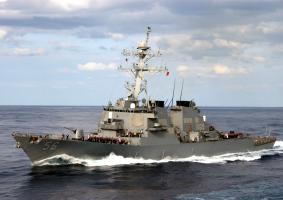 In the second major collision between a US Navy destroyer and a merchant ship in the last three months, the USS John S. McCain was damaged in a collision with a tanker near Singapore. Five sailors were injured and 10 are missing. There are reports of flooding in berthing compartments as well as machinery and communication rooms. Despite the damage, the destroyer was able to proceed under its own power to Singapore’s Changi Naval Base.
In the second major collision between a US Navy destroyer and a merchant ship in the last three months, the USS John S. McCain was damaged in a collision with a tanker near Singapore. Five sailors were injured and 10 are missing. There are reports of flooding in berthing compartments as well as machinery and communication rooms. Despite the damage, the destroyer was able to proceed under its own power to Singapore’s Changi Naval Base.
The US Navy announced: The guided-missile destroyer USS John S. McCain (DDG 56) was involved in a collision with the merchant vessel Alnic MC while underway east of Singapore and the Strait of Malacca on Aug. 21.
The collision was reported at 6:24 a.m. Japan Standard Time, while the ship was transiting to a routine port visit in Singapore. Initial reports indicate John S. McCain sustained damage to her port side aft. Search and rescue efforts are underway in coordination with local authorities.
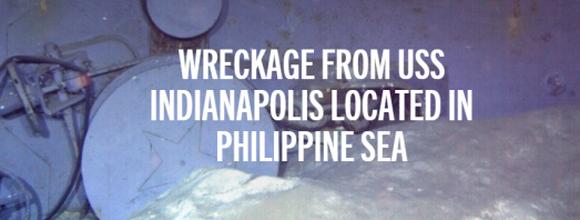 Paul Allen, billionaire co-founder of Microsoft, announced that wreckage from the USS Indianapolis was discovered on Aug. 18 by the expedition crew of Paul G. Allen’s Research Vessel (R/V) Petrel. The Indianapolis was found 5,500 meters below the surface, resting on the floor of the North Pacific Ocean. The sinking of USS Indianapolis in 1945 resulted in the greatest single loss of life at sea in the history of the U.S. Navy.
Paul Allen, billionaire co-founder of Microsoft, announced that wreckage from the USS Indianapolis was discovered on Aug. 18 by the expedition crew of Paul G. Allen’s Research Vessel (R/V) Petrel. The Indianapolis was found 5,500 meters below the surface, resting on the floor of the North Pacific Ocean. The sinking of USS Indianapolis in 1945 resulted in the greatest single loss of life at sea in the history of the U.S. Navy.
The press release went on to say: “To be able to honor the brave men of the USS Indianapolis and their families through the discovery of a ship that played such a significant role during World War II is truly humbling,” Mr. Allen said. “As Americans, we all owe a debt of gratitude to the crew for their courage, persistence and sacrifice in the face of horrendous circumstances. While our search for the rest of the wreckage will continue, I hope everyone connected to this historic ship will feel some measure of closure at this discovery so long in coming.”
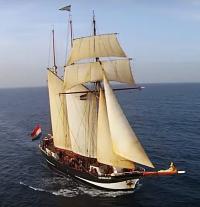 The Dutch three-masted topsail schooner Oosterschelde will be 100 years old next year, but she is still fast. She just finished first in the trans-Atlantic race from Halifax to Le Havre. After a voyage of 2,500 nautical miles (4,500 km) the ship left all her competitors behind and won the final leg of the Rendez-Vous 2017 Tall Ships Regatta. From their newsletter, Captain Arain reports: “Warren at the helm when we passed the finish line south of Eddystone lighthouse, off the coast of Plymouth UK at 16:02 UTC. First in class A and overall. A huge thanks to the crew!!!”
The Dutch three-masted topsail schooner Oosterschelde will be 100 years old next year, but she is still fast. She just finished first in the trans-Atlantic race from Halifax to Le Havre. After a voyage of 2,500 nautical miles (4,500 km) the ship left all her competitors behind and won the final leg of the Rendez-Vous 2017 Tall Ships Regatta. From their newsletter, Captain Arain reports: “Warren at the helm when we passed the finish line south of Eddystone lighthouse, off the coast of Plymouth UK at 16:02 UTC. First in class A and overall. A huge thanks to the crew!!!”
 The USS Fitzgerald, seriously damaged in a collision with a container ship on June 17th that killed seven U.S. sailors, will be transported back to the United States for repairs. The destroyer will be carried via heavy lift ship between mid-September and the end of October, Cmdr. Clay Doss, a 7th Fleet spokesman, told Stars and Stripes.
The USS Fitzgerald, seriously damaged in a collision with a container ship on June 17th that killed seven U.S. sailors, will be transported back to the United States for repairs. The destroyer will be carried via heavy lift ship between mid-September and the end of October, Cmdr. Clay Doss, a 7th Fleet spokesman, told Stars and Stripes.
The BBC reports that the US Navy has announced that about a dozen sailors are to be disciplined on the USS Fitzgerald due to the collision. The deputy chief of naval operations, Admiral Bill Moran, said the commanding officer and two other senior crew would no longer serve aboard the ship.
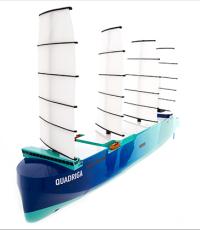 Lloyd’s Register (LR) announced recently that it has joined the Quadriga sustainable shipping project – an initiative from Hamburg-based Sailing Cargo, which aims to build a sailing car-carrier, which would be the world’s largest sailing cargo ship. The 170-meter long design features four DynaRig masts with a sail area of 5,000 M2 and would be capable of carrying between 1,700 to 2,000 cars. The ship will be powered by sails and diesel-electric engines with an initial design speed of 10-12 knots, with the goal of achieving 14-16 knots in the next few years as the design is developed.
Lloyd’s Register (LR) announced recently that it has joined the Quadriga sustainable shipping project – an initiative from Hamburg-based Sailing Cargo, which aims to build a sailing car-carrier, which would be the world’s largest sailing cargo ship. The 170-meter long design features four DynaRig masts with a sail area of 5,000 M2 and would be capable of carrying between 1,700 to 2,000 cars. The ship will be powered by sails and diesel-electric engines with an initial design speed of 10-12 knots, with the goal of achieving 14-16 knots in the next few years as the design is developed.
In addition to LR, Sailing Cargo is also partnering with ship operator, Peter Döhle Schifffahrts KG, naval architects, Dykstra Naval Architects and SDC Ship Design & Consult GmbH, hydrodynamicists, Hamburgische Schiffbau-Versuchsanstalt, and sailmaker, North Sails GmbH.
 For several years now, we have followed the progressive decline of the battleship USS Texas, commissioned in 1914. She is the only remaining World War I-era dreadnought battleship and is one of only seven remaining ships and the only remaining capital ship to have served in both World Wars. The USS Texas, now berthed in the salty waters of the Houston Ship Channel, continues to be losing a battle with time and corrosion.
For several years now, we have followed the progressive decline of the battleship USS Texas, commissioned in 1914. She is the only remaining World War I-era dreadnought battleship and is one of only seven remaining ships and the only remaining capital ship to have served in both World Wars. The USS Texas, now berthed in the salty waters of the Houston Ship Channel, continues to be losing a battle with time and corrosion.
As reported by the Houston Chronicle: “We pump about 300,000 gallons of water a day out of the Battleship Texas,” said Bruce Bramlett, executive director of the Battleship Texas Foundation. “There are places on the ship where the hull is so thin you can poke your finger through it. So we’re constantly pumping water out and patching holes and the water is constantly seeping back in.”
